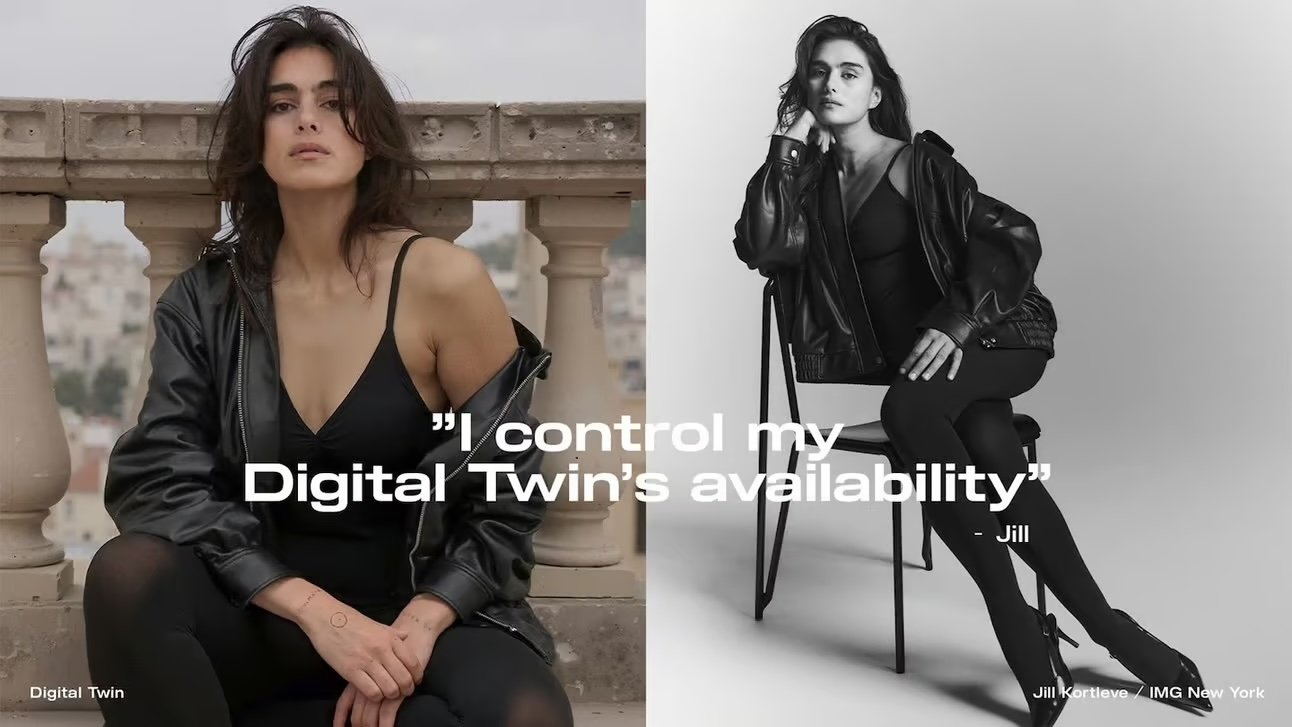H&M to Use AI-Generated Model 'Twins' in Social Media & Marketing Campaigns — The Good & The Bad
Jill Kortleve / IMG New York
H&M announced it will use AI-generated digital clones of about 30 models in its social media and marketing campaigns. The models will own the rights to their digital twins, receive payment when they’re used, and control how and when they’re utilized—even allowing them to work with other companies, including competitors.
The Criticism
Jörgen Andersson, H&M’s chief creative officer, acknowledged the criticism and pushback but said the move reflects where AI is heading. And the criticism is fair. An initiative like this will impact jobs. H&M and any brand following a similar path will likely work with a smaller, more elite group of talent, limiting opportunities for newer or emerging models.
It also affects the broader ecosystem around photoshoots. With digital replicas, there’s less need for makeup artists, hairstylists, and other on-set talent.
There Are Some Upsides
For the models involved, this could be a win. They gain a new revenue stream through their likeness and remove the barriers of time and geography. Models often juggle tight schedules and demanding travel. Digital clones could reduce burnout and allow them to be in multiple places at once. Most importantly, they maintain control over how their likeness is used.
Expect to See More of This
H&M isn’t the first brand to explore this. Levi’s and Hugo Boss have tested similar initiatives. More will follow as brands look to cut costs and stretch resources amid tightening budgets and a broader economic slowdown in the U.S.
If these efforts prove successful, we could see a broader pullback in investment in human talent, including within influencer marketing. We’re already seeing signs of this, with companies making it easier to create virtual influencers for UGC content and platforms like TikTok and Meta enabling brands to use hyper-realistic digital avatars in ad campaigns.
Still, there’s a catch. If AI-generated content or digital models don’t actually drive performance or resonate with audiences, brands may rethink the strategy. That said, AI is advancing so rapidly, it’s already becoming difficult to tell what’s real and what’s generated—even with labels.
AI’s Dual Impact on the Industry
This is another example of AI’s double-edged impact. Like OpenAI’s viral image generator, it’s drawing both praise and concern. Whether you see it as an opportunity or a threat depends on your perspective.
AI isn’t going anywhere. Whether you’re a marketer or a creator, now’s the time to figure out how to use it to your advantage—while also ensuring there’s still plenty of room for the human side of creativity and storytelling.
